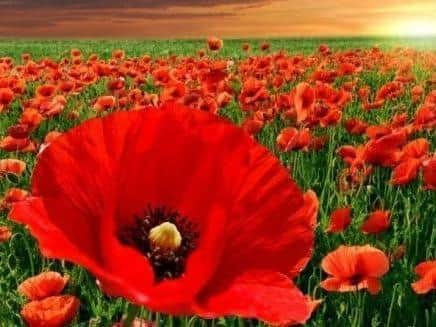Public health guidance issued so Remembrance events CAN go-ahead in Hertfordshire
and live on Freeview channel 276
Organisers can go-ahead and plan events to mark Remembrance Sunday in Hertfordshire, according to guidance from the county’s director of public health.
Every year thousands of people join together at cenotaphs across the county to remember the sacrifices that have been made.
Advertisement
Hide AdAdvertisement
Hide AdBut amid the second wave of the Covid-19 pandemic, there had inevitably been concerns that these events would not be allowed to go ahead at all.


Now director of public health Jim McManus has issued guidance to councils across the county to enable public acts of remembrance to be held.
But inevitably those events will not be the same as in previous years and will be subject to a number of changes to be Covid-19 secure.
Processions, according to the guidance, will have to be limited this year. And the passing of wreaths or flags, collective singing and the sharing of food will not be allowed.
Advertisement
Hide AdAdvertisement
Hide AdThe guidance is contained in a letter that has been sent to parish, town, district and borough councils as well as the Armed Forces Covenant Board.
But it also comes with a warning that it could be superseded by any guidance from the government, which has not yet been given – or by national or local restrictions.
According to the guidance processions ‘if they must happen’ should be limited to the wreath laying party, clergy, musicians and as few others as possible.
Handshakes and physical contact will not be allowed. And wreaths and flags should be handled by one person.
Advertisement
Hide AdAdvertisement
Hide AdPeople will be able to line the route – but only if suitably distanced and care is taken to avoid congestion before of after the event.
And there should be no more than six people sitting together – with no mixing between household groups.
According to the guidance care should be taken to segregate those who are vulnerable from the main parties.
And the vulnerable – and their carers – should avoid physical interaction with people and surfaces as much as possible.
Advertisement
Hide AdAdvertisement
Hide AdFace coverings should be worn by those not speaking. And ideally, it says, there should be no catering – and any food brought by attendees should not be shared.
Organisers will also be asked to draw up contingency plans should then need to communicate with potential attendees in advance.
And they will be required to record those who do attend for the purpose of track and trace.
Mr McManus referred to the guidance in a meeting of the Health and Wellbeing Board on Friday, October 2.
Advertisement
Hide AdAdvertisement
Hide AdHe said there was not yet national guidance, but he said the county had drafted and issued guidance related to Remembrance Sunday.
He said this was in line with their approach of highlighting what people could do safely.
And in doing so he highlighted the impact the virus had had on the population psychologically – and the sense of grief.
Following the meeting, executive member for public health and prevention Cllr Tim Hutchings says Remembrance Sunday is an important date on the calendar for many people.
Advertisement
Hide AdAdvertisement
Hide AdAnd he said the guidance reflected the council’s approach of facilitating events where possible.
At a meeting of the Health and Wellbeing Board on Friday, director of public health Jim McManus pointed to evidence that the Covid-19 virus MAY be spreading more slowly.
And he said that if that was true, it would explain why this peak has not resulted in the same number of hospital admissions and why the survival rate had gone up.
However he reminded board members that death was not the only ‘bad outcome’ from the virus – which can put large demands on patients bodies and, for example, cause wasting of heart muscles.